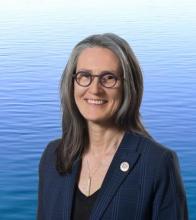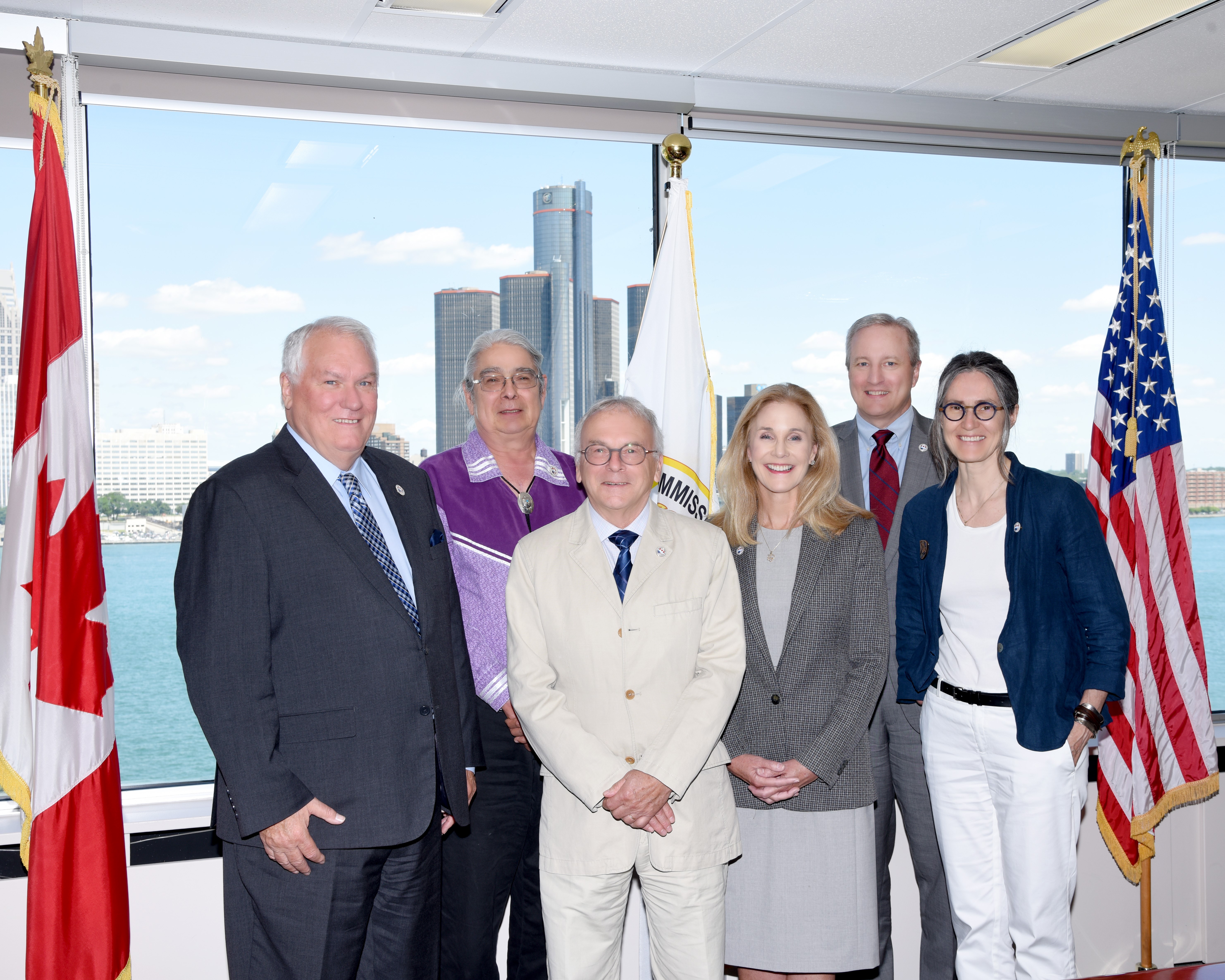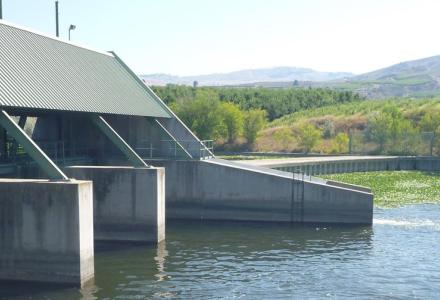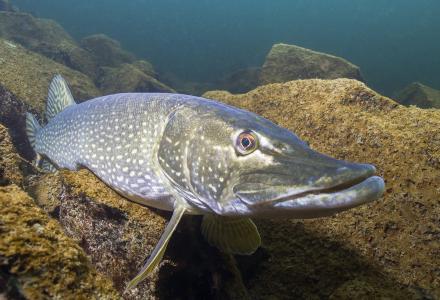
Commissioners Merrell-Ann Phare and Lance Yohe both were appointed to the IJC by the respective governments of Canada and the United States at nearly the same time, but they share something else in common: the Red River.
Yohe has spent much of his career living and working in North Dakota’s Red River Valley, while Phare has called Winnipeg, Manitoba, home for much of her life. And with both having years of experience working on water management and rights issues between multiple jurisdictions, the two have come to the IJC to continue finding consensus and agreement across the entire transboundary region.
Phare: Seeking common ground with indigenous governments

Phare has spent much of her time in the Canadian West, where she has practiced environmental law – particularly as it relates to indigenous rights and concerns, including water. While not indigenous, Phare sees herself as a collaborator working to build bridges between indigenous and non-indigenous governments and people.
Phare was a founding executive director of the Centre for Indigenous Environmental Resources, a collaboration that started with 10 First Nations chiefs from across Canada. There, she worked on treaty land, environmental and water issues, a job that required finding common ground across borders and cultures to help create sustainable development. This expertise led her to be tapped by the Northwest Territories government in 2009 as chief negotiator in finding a water agreement with Yukon, British Columbia, Alberta, Saskatchewan, the federal government and First Nations involving the Mackenzie River basin – the longest river system in Canada and North America’s second-largest drainage basin next to the Mississippi. That effort, she said, taught her a lot about how multiple levels of governments, including indigenous ones, could work with one another to find a collaborative resolution on water management.
“That’s where I really learned a lot about transboundary water issues, and how complex and fascinating they are,” Phare said. More recently, she‘s worked on a Collaborative Leadership Initiative between 10 First Nations and 16 municipalities in southern Manitoba that make up 70 percent of the province’s population to work together on restoring Lake Winnipeg, which has suffered from water quality problems due to excessive nutrients.
The IJC’s long history – the 1909 Boundary Waters Treaty created the organization – made it an appealing place to Phare. She noted that the organization is built, and depends, on trust, goodwill and collaboration between Canada and the United States – the same as the water management issues she’s worked on within Canada.
Yohe: Minimizing water conflicts

Yohe was familiar with the Red River’s issues with flooding before taking on the role of a Lutheran minister at a parish in the Red River Valley, having gone to Concordia College in Moorhead, not far from its banks. As he learned more about how devastating the flooding was to his congregation’s lives on both sides of the river, he decided to get involved with an organization formed after the 1979 floods by local mayors and other leaders.
He spent much of the 1980s working with that grassroots group as it sought solutions to flooding and drought issues, and returned to it as an executive director in 2001 when it merged with another organization dealing with permitting issues on a state and provincial level – forming the independent Red River Basin Commission.
Minnesota, North Dakota and Manitoba all have different laws and practices related to water shared between them.
For example, Yohe noted that in a drought, Minnesota cuts everyone’s water usage back equally, while North Dakota will cut down on water use by whoever has the most recent permit, right down until the river is dry. Manitoba uses a first-come, first-served system somewhat modified during emergencies. Additionally, the two states operate under US flood emergency procedures, while Manitoba has to deal with that water coming from upriver under its own Canadian procedures. Finally, Yohe notes that with 23 federal agencies and numerous state and provincial agencies, municipalities and counties with jurisdiction on the Red, getting everyone together to deal with those issues was challenging.
“Over the course of doing all that, I became very familiar with the water issues of the IJC and the International Red River Board, as we worked back and forth across the border all the time,” Yohe said.
Getting to know the now-former Commissioners and what the IJC does, Yohe said he became interested in wrapping up his career by minimizing the conflicts that tend to arise over water across the entire transboundary region. From his time on the Red River Basin Commission, Yohe brings experience working on flood, drought and excessive nutrient issues, and looks forward to drawing on his background while also learning more about emerging issues.

Looking ahead in new roles
The IJC covers waterways from the Pacific to the Atlantic Ocean, and all six Commissioners are still in the process of getting up to speed on the intricacies and local issues in each of the basins the IJC has a role in. Individual Commissioners often have specifics topics they want to look into, but these do not represent the views or priorities of the Commission until adopted by the Commission as a whole. The IJC will be profiling other commissioners from the two countries in upcoming newsletter editions.
Flooding and drought issues, particularly in a changing climate, are on Yohe’s mind. Yohe also is interested in learning more about water quality issues across the transboundary through the context of the IJC’s existing dockets.
Phare said her time negotiating the Mackenzie River water agreement and her background of working with indigenous interests has her interested in the situations in several western waterways, such as the Red River, St. Mary and Milk rivers and the Columbia River system – including the transboundary areas along the Osoyoos and Kootenay rivers.
Phare is particularly interested in seeing how the IJC can support western water basin agreements, reducing nutrients into waterways and large bodies, ensuring there is enough water for ecosystems and environmental flows, and supporting the implementation of indigenous water rights and governance. Both she and Yohe are interested in ensuring indigenous governments and people can collaborate with IJC on issues important to them.
While the IJC can’t require governments to follow its recommendations, Yohe recalled that the Red River Basin Commission was able to convince multiple stakeholders that findings in a flood reduction strategy report were worth pursuing. He and Phare say that, in the end, getting people together, listening to their concerns and trying to figure out a path forward that’ll work for everybody is difficult work, but is exactly what the IJC is here for.
“I want to see us do the best we can on issues for both countries,” Yohe said. “That’s at the heart of what the IJC does and that’s what I want to do.”

Kevin Bunch is a writer-communications specialist at the IJC’s US Section office in Washington, D.C.



